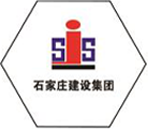
8 月 . 15, 2024 11:52
Back to list
Understanding Gas Safety Relief Valves and Their Importance in Preventing Pressure Hazards
Understanding Gas Safety Relief Valves
Gas safety relief valves (GSRVs) are critical devices used in various industries to ensure the safe handling and use of gas under pressure. These valves play an essential role in protecting equipment and personnel from overpressure conditions that can lead to catastrophic failures or hazardous situations. Understanding the function, types, maintenance, and regulations surrounding these valves is crucial for anyone involved in the management of gas systems.
Functions of Gas Safety Relief Valves
The primary function of a gas safety relief valve is to relieve excess pressure from gas systems, preventing potential explosions or leaks. When the pressure within a system exceeds the designated threshold, the relief valve opens, allowing gas to escape safely and reducing the pressure to a safer level. This automatic response helps protect pipelines, storage tanks, and other critical components from damage.
In addition to offering protection, GSRVs can also help maintain operational efficiency. By managing pressure levels, they ensure that gas systems operate within their designed parameters, ultimately prolonging the life of equipment and enhancing overall system reliability.
Types of Gas Safety Relief Valves
Several types of gas safety relief valves are designed for specific applications. The most common types include
1. Spring-Loaded Relief Valves These are the most widely used due to their simplicity and effectiveness. They feature a spring mechanism that holds the valve seat closed until the preset pressure is reached. Once this point is exceeded, the valve opens to release pressure.
2. Pilot-Operated Relief Valves These valves utilize a pilot system to control the main valve. They are ideal for high-pressure applications and can offer a more precise control of pressure relief.
gas safety relief valve

Choosing the appropriate type of relief valve is essential for ensuring optimal performance and safety in gas handling operations.
Maintenance of Gas Safety Relief Valves
Regular maintenance is vital to ensure that gas safety relief valves function correctly when needed. Routine checks should include inspecting the valve for signs of wear, corrosion, or damage, and ensuring that it operates freely without any obstructions. Testing the valve's set pressure is important to confirm that it still meets the necessary specifications.
Additionally, valves should be calibrated according to manufacturer recommendations and industry standards. Keeping accurate records of maintenance activities helps track the valve's performance over time and ensures that any potential issues are addressed promptly.
Regulatory Considerations
The operation and maintenance of gas safety relief valves are subject to stringent regulations set forth by industry standards and governmental bodies. Compliance with these regulations is not only crucial for safety but also for legal liability. Various organizations, including the American National Standards Institute (ANSI) and the Occupational Safety and Health Administration (OSHA), provide guidelines and regulations that govern the design, installation, and maintenance of GSRVs.
In conclusion, gas safety relief valves are indispensable components in the safe handling of gas systems. By understanding their functions, types, maintenance requirements, and regulatory landscape, industry professionals can ensure that their operations remain safe, efficient, and compliant. Investing in proper training and equipment is essential to minimize risks associated with gas overpressure and protect both personnel and infrastructure from potential hazards. Emphasizing the importance of these safety devices ultimately strengthens the industry’s collective commitment to safety and operational excellence.
Latest news
-
Unlocking The Quality Gas Pressure ReducersNewsNov.01,2024
-
The Role of Gas Pressure Reducing StationsNewsNov.01,2024
-
The Importance and Functionality of Safety Relief ValvesNewsNov.01,2024
-
The Essential Role of Safety Valves in Natural Gas ApplicationsNewsNov.01,2024
-
The Essential Role of Gas Pressure RegulatorsNewsNov.01,2024
-
Enhance Your Premium Gas FiltersNewsNov.01,2024

